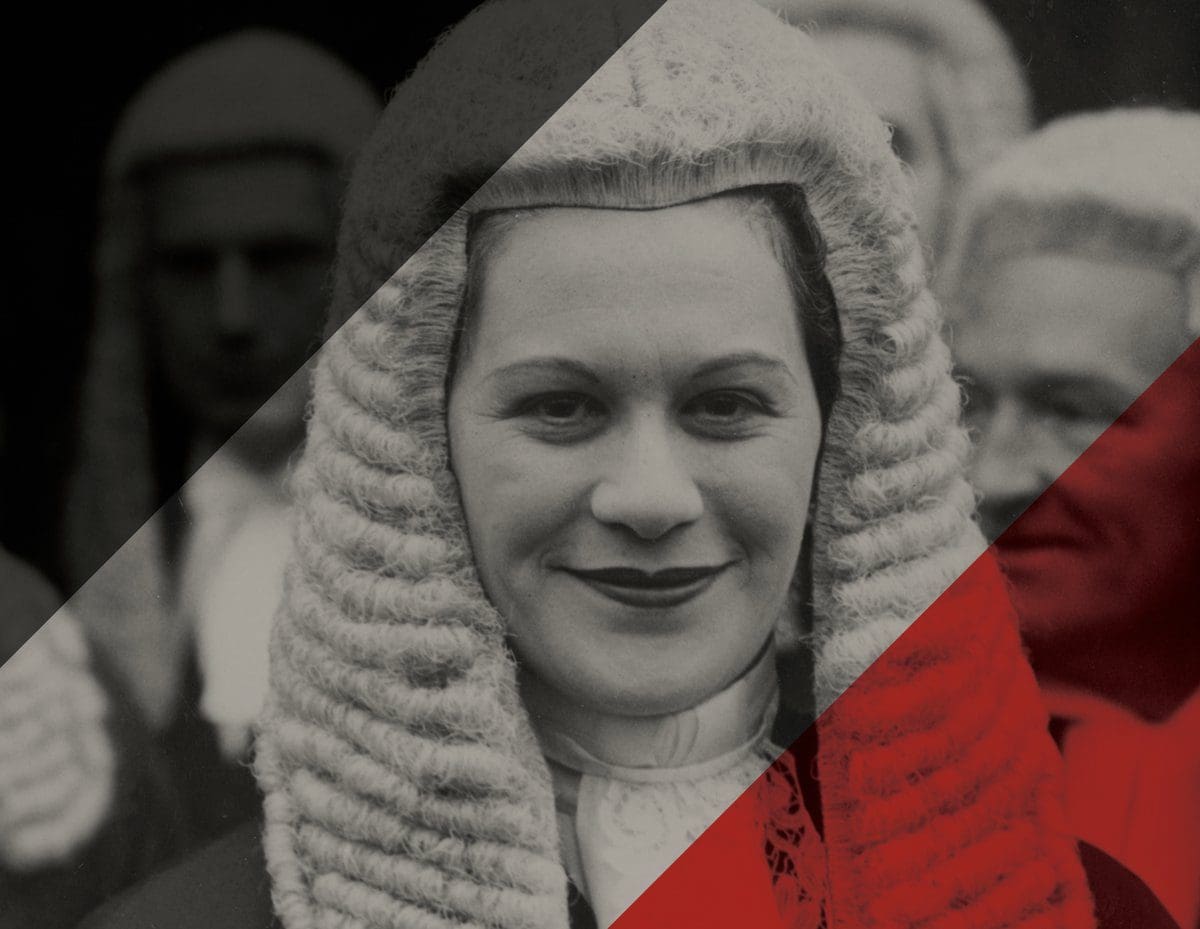Did you know that 84% of UK mothers who work in the law find it difficult to balance the demands of motherhood with their career, with half of them feeling they are treated differently to fathers in the workplace? And could you name the year that women were first admitted to the legal profession? Would you be surprised to learn that it wasn’t until 1919?
In her guest blog for TBD, Dana Denis-Smith talks to us about setting up the First Hundred Years project, which documents and celebrates 100 years of women working in the law, and the challenges that female lawyers still face today.
As a woman working in a big City firm, I was perfectly familiar with the challenges that women face in the legal profession. And when I set up my company Obelisk, where I work together with mothers wishing to return to the legal profession, I heard so many negative stories about the obstacles these women faced – the feeling of there being no space provided for them and that they were essentially unwanted by the employer to whom they’d previously given so much.
There was this vast, powerful narrative of negative experience out there, and it left me determined to turn the tide: I’m a problem-solver and entrepreneur, so my brain rebels at negative storylines. I don’t mean that I was in any way dismissive of what I was hearing – but I felt like a doctor might do when confronted with a patient: here are the symptoms, so what is the cure?
With Obelisk, I was telling women my own small counter-narrative about how they could still earn money and keep their hand in. But I was constantly aware that there is a much bigger story to be told about what it is that makes women leave the legal profession or become detached from it in a way that men don’t – why are male lawyers so likely to just plough on relentlessly, even when they don’t really enjoy the work? Where does it stem from, this sense of a lack of belonging that women often carry with them, making it so easy for them to abandon the law?
In November 2013, there was a story in the alumni magazine published by Herbert Smith Freehills, which my husband receives – I can’t remember many details of the story, other than that it was about a male alumnus, but what caught my attention was a group photograph in the corner of the page, taken in 1982 and featuring a big group of lawyers dressed in black tie. There was only one woman in that shot. And I suddenly had a lightbulb moment: in my lifetime, there had been so few women in leading positions within law firms to push for a different narrative. And I wanted to know how this was possible.
During my research, I came across the Sex Disqualification (Removal) Act 1919, which paved the way for women to become lawyers for the first time. I immediately saw that the centenary of this landmark piece of legislation could provide a powerful focal point for giving female lawyers the much-needed context for their professional endeavours and a necessary sense of their own collective history. I believed, and still do, that without this history and the sense of kinship it creates, women become estranged from the profession, which makes it easier for them to walk away. And so, by going back in time and telling the story of women in the legal profession in the century since 1919, I felt that we could create something almost like a family tree for today’s female lawyers.
However, I quickly realised that the First Hundred Years project was something that I would need more time to get off the ground: in 2014, I was still a junior lawyer myself and the mother to a three-year-old daughter, so I simply didn’t have the capacity to make my own vision for this campaign a reality within just one year. And so I made the decision to turn it into a five-year project, culminating with the centenary itself.
I took my idea to the board of directors at Obelisk, and they shot it down immediately, saying that it would distract me too much from my work. But I overrode them and insisted that Obelisk’s marketing budget from next year was going towards the First Hundred Years initiative, whether they liked it or not. And so the firm initially paid for the project as a foundation partner, and we began to establish the timeline of women’s contribution to the legal profession.
This work was like establishing the chronology of a case. I needed to establish the facts and visited the Law Society Library to look for photographic evidence of female lawyers. What I soon found is that there was barely anything useful in the archives. It seemed that there wasn’t even enough physical material to piece the story together. I had to ask myself: how could women ever feel a sense of belonging if they were so painfully absent from the historical record? Look at the photographic history of the Inns of Court or any of the big law firms, and all you will see is men – so why should women feel like there is a place for them?
I decided to turn this very real problem on its head and tell a different and more positive story: I wanted to highlight that there had been female pioneers in the profession but that they had been invisible. This helped to shift the narrative from a negative one of ‘I will never be able to gain equality and achieve more’ to a more positive tenor: ‘Actually, there have been women that stuck it out and achieved great things – they may not be well-known at present, but we are going to change this and celebrate their achievements’.
Now that so many female lawyers are visible and vocal on LinkedIn, it doesn’t seem that innovative to have female role models in this profession. But things looked quite different back in 2014 when we started this project – at that time, very few women wanted to step out into the limelight and tell the truth about what it was like to have your career impacted through motherhood. They had worked very hard to achieve their position, and were afraid to be seen as biting the hand that fed them.
One of the things that was therefore very important to me was to create a public story-telling space where it was safe to share the full story of what it’s like to be a female lawyer with children, and not just the redacted or sanitised version focusing exclusively on the work side of the equation. And then to connect these unvarnished narratives with what it is like to be a woman, with the legacy and history of women in law and creating something that female lawyers can truly be proud of – because they are standing on the shoulders of giants. It was about establishing a dialogue with a history that had hitherto been missing.
The other factor in all this was that my research showed that my generation of women included so many ground-breaking innovators, and that if we didn’t celebrate their achievements, these would also be lost to posterity in the way that the first female pioneers in the legal profession had been. So we wanted to create a video library and archive to tell these women’s stories and save them for future generations. The idea was to capture this previously concealed history in a visually compelling, memorable and engaging way.
It was important to me that the project remain independent and not be ‘owned’ by any one company, including Obelisk – I was sure that this was the only way it would truly take off and resonate with the intended audience. At Obelisk, we set up the foundation and then the initiative turned into a standalone entity as Spark21, a registered charity. To my mind, this is the perfect wrapper to contain the first 100 years, and now the next 100 years, of women working in the law.
In terms of funding, we had an uphill battle on our hands at first. I was initially confident that we could crowd-source £100,000 from lawyers themselves and use the money to create the amazing video archive I envisaged. But it was not to be – my own lack of connections in high places at the time made it a real struggle to convince people to invest. No law firms were willing to fund us at that time. And even with the support of the Bar Council and the Law Society, it seemed that the legal profession at large was totally disinterested in this topic. However, we did manage to obtain an initial £12,000 as seed capital, enough to at least get us started. Perhaps unsurprisingly, our biggest individual donations came from three women, who were kind enough to donate £1,000 each.
And so we bootstrapped the charity and the video library without compromising the quality of the organisation or the content of the archive. We took our time and used the services of professional producers to make compelling, first-rate films. In this way, we told the story of hugely inspiring individuals like Lady Hale, whose life had never been documented before.
I think the prestigious women who first agreed to share their story with us saw that by supporting our project from the top down, they could help create the safe space we envisaged and help other women tell their story without being punished for it. And I believe that the humble beginnings of our project actually helped persuade these great female leaders to participate in our project – we were open about the fact that we had no major backers, but did have a very clear and persuasive vision that they could help make reality. The marquee value of these successful women’s names then began to unlock more doors for us, and the project gained traction. The rest, you might say, is history.
Except it isn’t – because we are also very much looking to the future of women in the legal profession. Some of the battles faced by previous generations have been fought and won and don’t need rehashing. Broadly speaking, accessing the legal profession is not a problem for most women in 2023. Yes, there are intersectional barriers, such as social background and ethnicity, but these also apply to men.
The issues that women find themselves confronted with today are how to remain in the profession, how to progress their career, how to make partner, or how to balance being a senior lawyer with being a mother. This last concern in particular is a subject of massive debate, as women often anticipate being punished for having children and so leave the profession well before they have become mothers.
They see it as a zero-sum game, thinking they either must stay in the firm 100% or be pushed out. And while the stories shared with us by the previous generation provide a certain amount of insight into how some of these concerns might be navigated, their solutions are often no longer workable in a world where most families require two incomes. So it is essential that we rethink the workplace if we are to resolve the problem of losing so much female talent from the legal profession. This is just one of the key issues for us to focus on in the next 100 years.

Dana Denis-Smith
Founder & CEO, Obelisk Support







